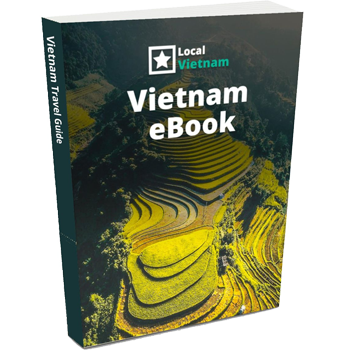About bird spotting in the Mekong Delta
Landscapes & why birds gather here
The Mekong Delta is essentially a giant wetland at the end of one of Asia’s biggest rivers. Its landscapes are a patchwork: flooded grasslands that appear in the dry season, melaleuca (cajuput) forests standing in shallow water, endless canals and rivers, mangrove forests along the coast, and wide stretches of intertidal mudflats.
For birds, this mix is a buffet and a safe haven. Wetlands provide food-rich shallows, mudflats attract migratory waders, mangroves give cover for nesting, and seasonally flooded grasslands create temporary feeding grounds. That is why the Delta draws not only resident species but also huge numbers of migrants moving along the East Asian–Australasian Flyway.
Types of birds you can expect
The everyday sights are herons, egrets, cormorants, kingfishers, and bee-eaters—birds you’ll see even if you’re not actively birding. The bigger rewards are seasonal: Sarus Cranes stepping through the grasslands, rare adjutant storks soaring over melaleuca, or flocks of shorebirds like plovers and sandpipers gathering on tidal flats.
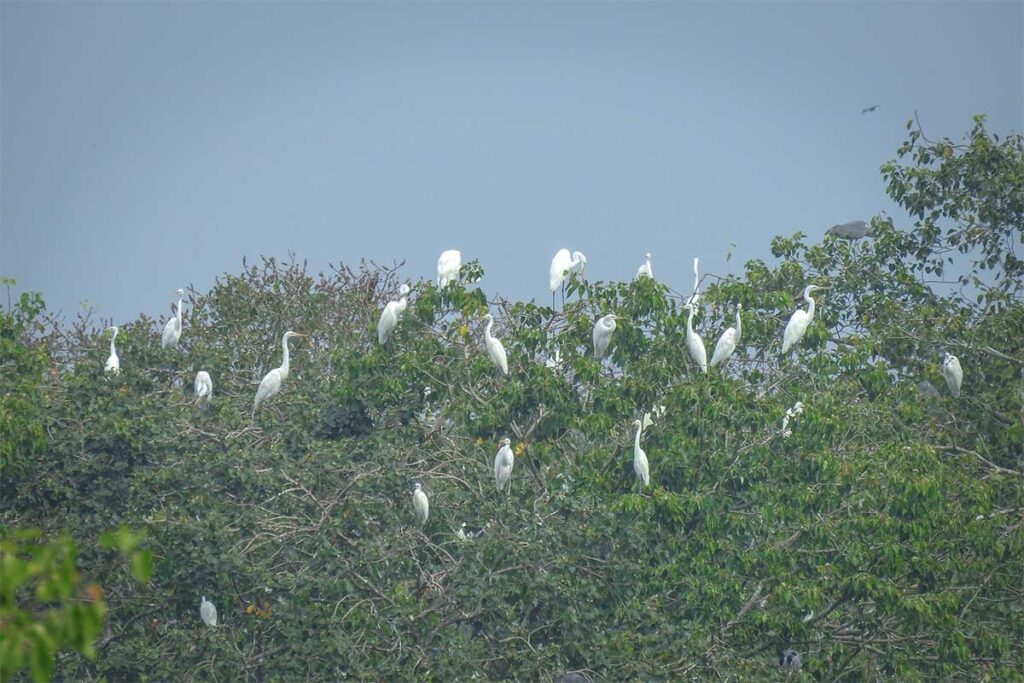
What makes the Mekong Delta memorable is often the spectacle, not just the species list. At stork gardens, thousands of birds lift off at sunrise or flood back into the trees at sunset. In parks like Tram Chim, shallow lakes in the dry season concentrate birds into visible clusters—ducks, ibises, and storks all mixed together in one view.
Accessibility & logistics (big picture)
Not all habitats are equal when it comes to ease of visiting. Stork gardens near Can Tho or Ben Tre are the simplest—short drives, small entrance fees, and towers or boats that put you right among the action. Melaleuca forests like Tra Su are also easy, with boat tours and boardwalks already set up for tourists.
The more specialist sites, like coastal mudflats at Tan Thanh or the remoter swamps of U Minh Thuong, require more effort: private transport, flexible timing, and ideally some local knowledge. Infrastructure varies—expect basic signage at best, and little in the way of interpretive material. Visits usually mean a mix of boat rides, short boardwalks, and climbing towers. It’s practical and doable, but don’t expect polished national park centers everywhere.
Best time to do birding in the Mekong Delta
Why season matters
The Mekong Delta is shaped by two seasons: rainy (May–October) and dry (November–April). This isn’t just about whether you’ll get wet—it directly affects birdwatching. In the rainy months, water levels rise, spreading birds over larger areas and making access to certain reserves trickier. In the dry season, wetlands shrink into shallows and mudflats, concentrating birds into more visible groups. Migration also follows this pattern: many shorebirds and cranes move through or arrive during the drier months, giving you a much better chance at seeing rare species.
Prime months and what’s special
From November to April, birding is at its best. Visibility is high, the weather is more comfortable, and this is when the migratory species are around. Sarus Cranes, for example, are typically seen at Tram Chim and Láng Sen between late January and April, when water levels are low enough to expose the grasslands they feed on. Shorebird numbers peak along the coast between November and March, with chances of spotting rarities like Spoon-billed Sandpiper or Nordmann’s Greenshank.
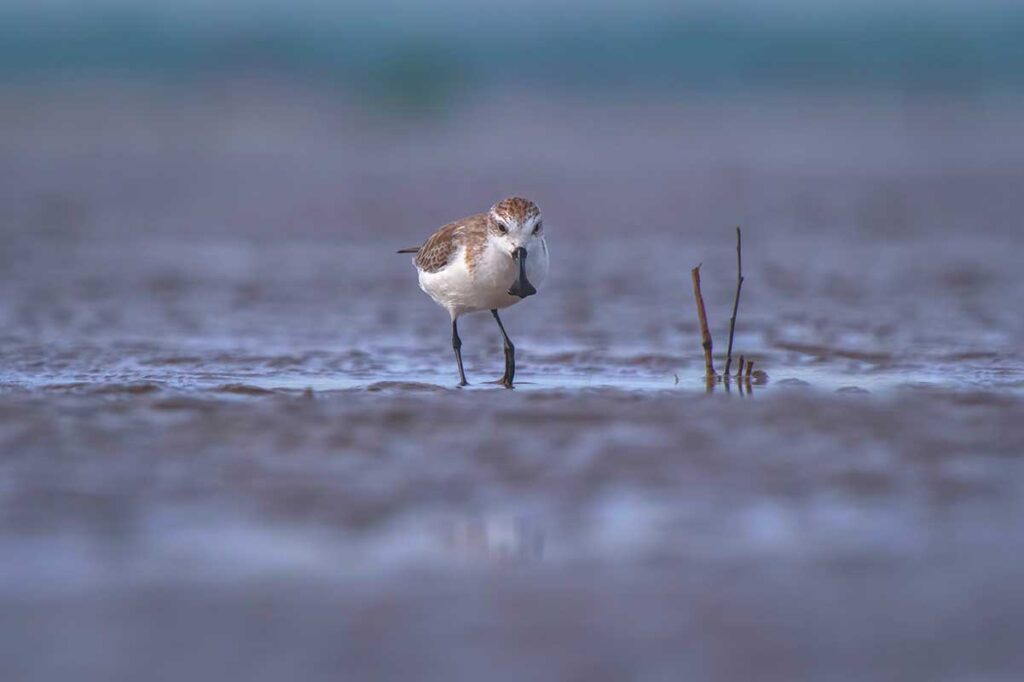
The shoulder months can still be worthwhile, but conditions shift. Early rainy season (May–June) still has some migrants lingering, but higher heat and flooding start to limit access. Late rainy season (September–October) is dramatic for scenery, with flooded melaleuca forests looking their most photogenic, but it’s harder to track down species that are more dispersed across the landscape.
Outside prime months (what to expect)
Even in the “off season,” birding doesn’t grind to a halt. Herons, egrets, cormorants, and kingfishers are resident year-round, so you’ll always see something. Stork gardens like Bang Lang or Vàm Hồ are still spectacular at dusk, regardless of season, as thousands of birds return to roost.
For photography, the rainy season can be a mixed bag. On the plus side, water plants like lotus and water lilies are at their peak, adding color and foreground interest. On the downside, humidity creates haze, and frequent afternoon downpours can make it hard to plan light. If your main focus is species variety, stick to the dry months; if it’s atmosphere and landscapes, the rainy months can be surprisingly rewarding.
Best bird sanctuaries in the Mekong Delta
1. Bang Lang Stork Sanctuary (Can Tho)
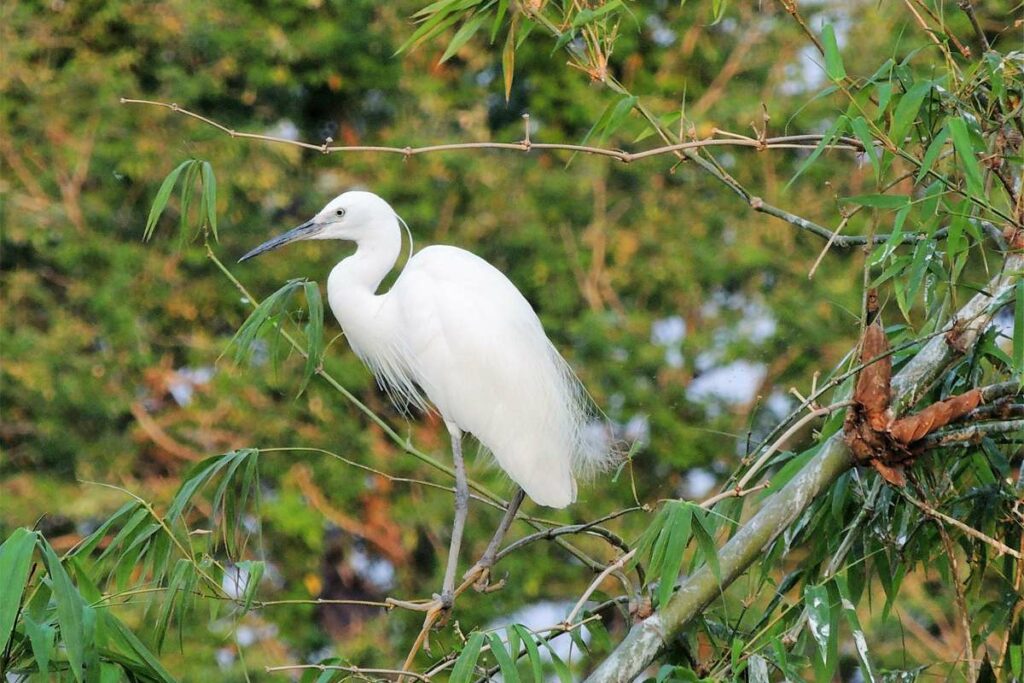
This small, community-run sanctuary sits just outside Can Tho and has grown from a private garden into one of the Delta’s most famous bird roosts. It’s not a large park—just a few hectares with canals and a simple viewing tower—but the drama comes from the sheer number of birds using the site at dawn and dusk.
The highlight is the mass gatherings of storks, egrets, herons, and cormorants. Painted Storks and Glossy Ibises add variety, while night-herons and kingfishers are often spotted in the surrounding trees and waterways. The experience is less about rare species and more about watching the sky fill with wings and noise as birds come and go.
Getting there is easy from Can Tho by motorbike, taxi, or private car. Facilities are minimal, so don’t expect much beyond the tower and a few paths. The spectacle only lasts an hour or two, but timing it right at sunrise or sunset makes it one of the most memorable birding stops in the region.
Read the full Bang Lang guide →
2. Tram Chim National Park (Dong Thap)
Tram Chim is the Mekong Delta’s flagship wetland, protecting more than 7,000 hectares of seasonally flooded grasslands and lotus-filled lakes. The park is a Ramsar site and one of Vietnam’s most important refuges for wetland birds. Visitors explore mainly by boat, with waterways taking you through different habitats and open views across the grasslands.
Its best-known species is the Eastern Sarus Crane, which appears in the dry season from late January to April. The park also records Bengal Florican, Painted Stork, Black-headed Ibis, and Lesser Adjutant, while ducks, waders, and darters fill the shallow lakes in impressive numbers. Even outside migration peaks, residents like Purple Swamphens and cormorants keep the birding lively.
A visit usually takes half a day to a full day. It’s a bit remote, but eco-tourism is well organized with boat services, guides, and nearby accommodation. For birdwatchers willing to travel a little further, Tram Chim delivers the most complete birding experience in the Mekong Delta.
Read the full Tram Chim guide →
3. Vam Ho Bird Sanctuary (Ben Tre)
Vam Ho lies along the Ba Lai River in Ben Tre, where mangroves and nipa palms form a quiet green maze of waterways. It’s a community-managed sanctuary covering dozens of hectares, and while not as famous as Tram Chim or Tra Su, it gives you a close look at birdlife in a coastal setting. Boat rides or short walks through the shaded forest are the main way to explore.
The birdlife here is dominated by large roosts of storks, herons, and egrets. Asian Openbills and cormorants are also regular, with the real highlight being the mass returns at dusk when thousands of birds settle into the trees. It doesn’t have rare species like Sarus Cranes, but the sheer numbers create a lively and noisy show.
Vam Ho is a convenient add-on if you’re already visiting Ben Tre, just a short trip from town. Facilities are basic but functional, and the best experience comes in the late afternoon when the bird spectacle reaches its peak.
4. Tra Su Cajuput Forest (An Giang)
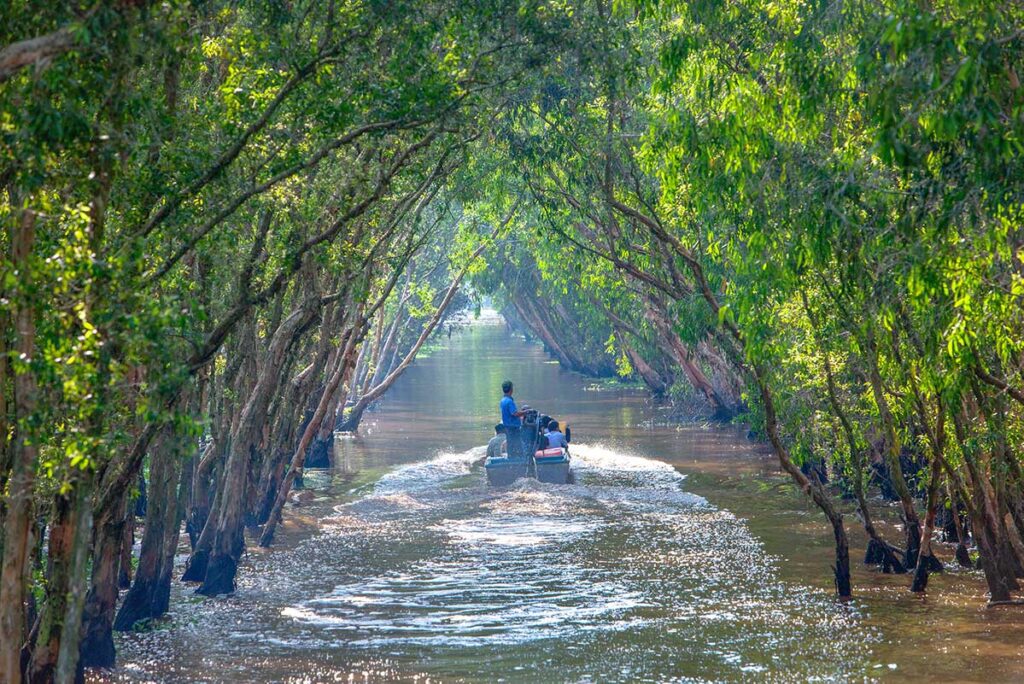
Tra Su is a flooded melaleuca forest near Chau Doc, known for its striking scenery as much as its birdlife. In the wet season, boats glide along canals covered in duckweed, while in the dry season you can walk along boardwalks and raised paths. It’s one of the most photogenic wetland areas in southern Vietnam and popular with domestic tourists.
Birds here gather in large heronries, with Painted Storks, Oriental Darters, and flocks of cormorants standing out. Kingfishers and bee-eaters add color along the waterways, and weaver birds build intricate nests over the canals. The variety isn’t as broad as Tram Chim, but the density of visible birds makes up for it.
Access is straightforward with day trips from Chau Doc or Long Xuyen. Boat tours are well organized, and a mix of motorized and rowed boats lets you cover both the main canals and smaller quiet channels. Expect crowds in high season, but with patience you can still find peaceful corners.
5. U Minh Thuong National Park (Kien Giang)
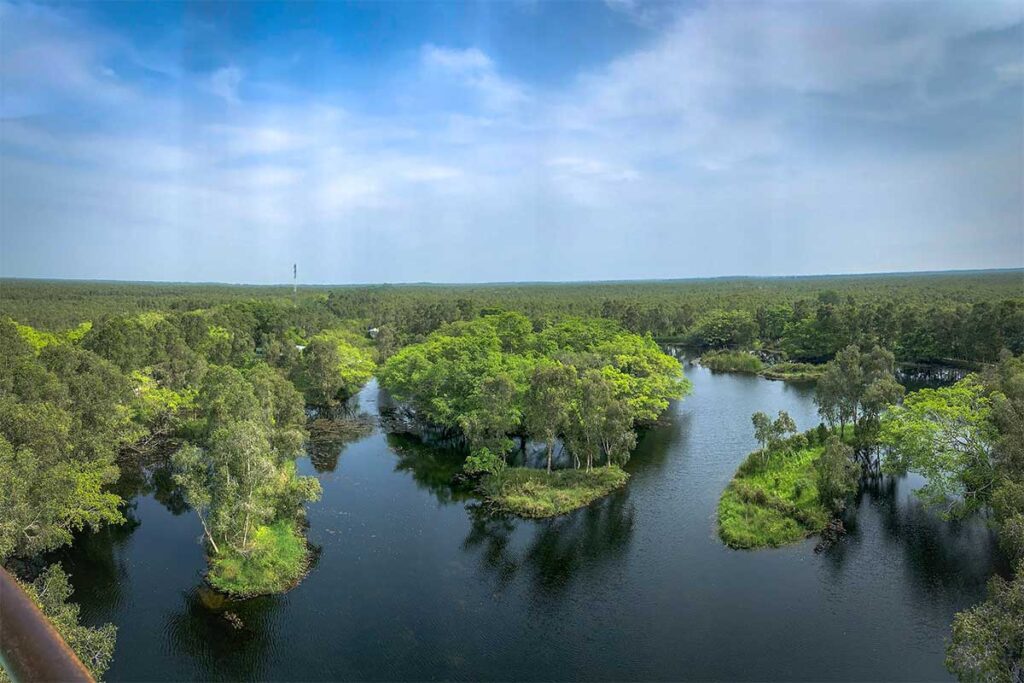
U Minh Thuong protects one of the last large peat-swamp forests in Vietnam, a rare and valuable ecosystem. The park is remote and less visited than other sanctuaries, but it is one of the Delta’s top conservation priorities. Its landscape of melaleuca forest, seasonally flooded grassland, and swamp creates habitat for a wide range of wildlife.
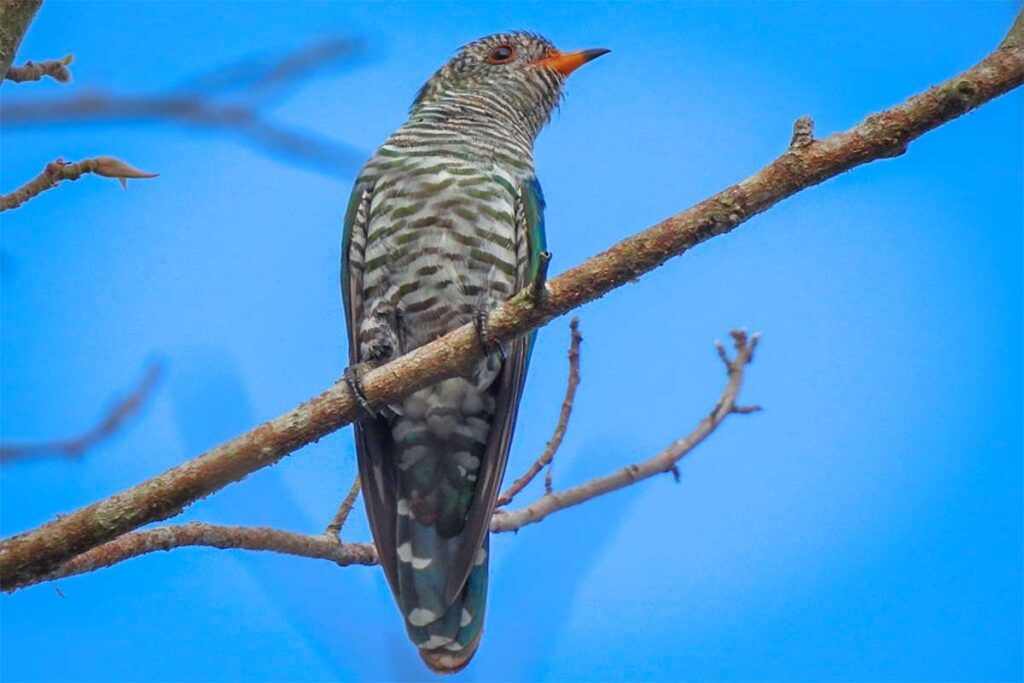
For birders, this is one of the best places in the Delta to see rarities. Lesser Adjutant, Spot-billed Pelican, and Black-headed Ibis are all recorded here, along with Grey-headed Fish-Eagle and Oriental Darter. Asian Openbills and Painted Storks are more common, and weaver birds are often seen nesting near the waterways.
Visiting requires more planning than other sites. From Rach Gia or Ha Tien, you’ll need private transport, and conditions vary by season with water levels affecting which areas are accessible. Towers and trails offer good views, but it’s best to go with local guidance to make the most of your time.
Read the full U Minh Thuong guide →
6. Bac Lieu Bird Sanctuary (Bac Lieu)
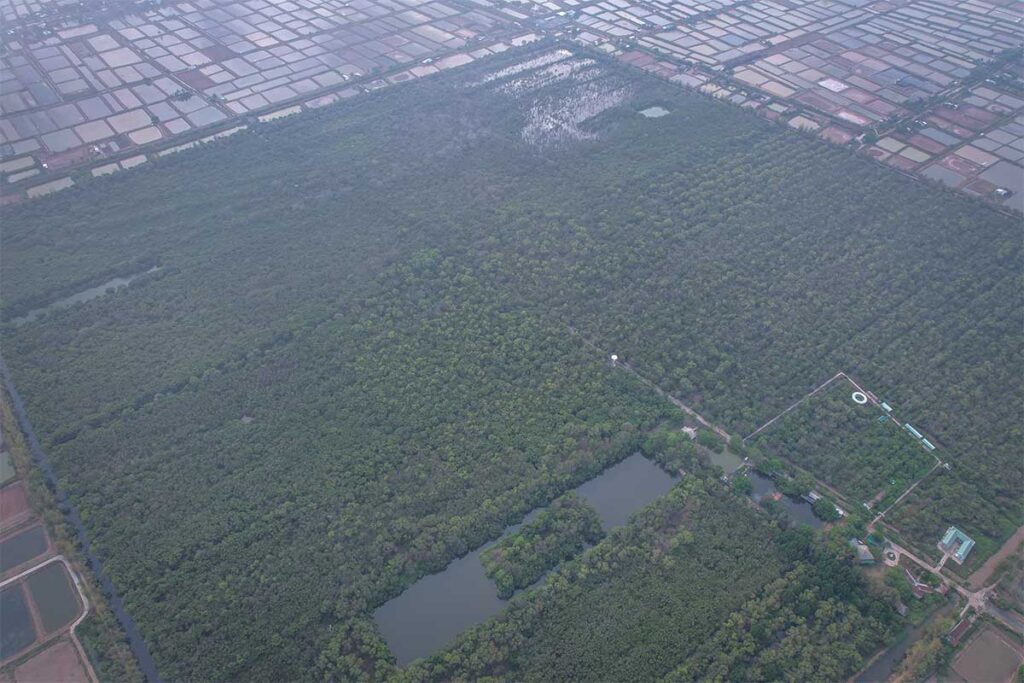
Bac Lieu Bird Sanctuary is a small mangrove remnant near the coast, but despite its size it shelters dense breeding colonies of waterbirds. The sanctuary is compact and easy to walk around, with raised paths and lookout points that bring you close to the rookeries. It’s more of a concentrated bird yard than a vast wetland, but that makes sightings immediate.
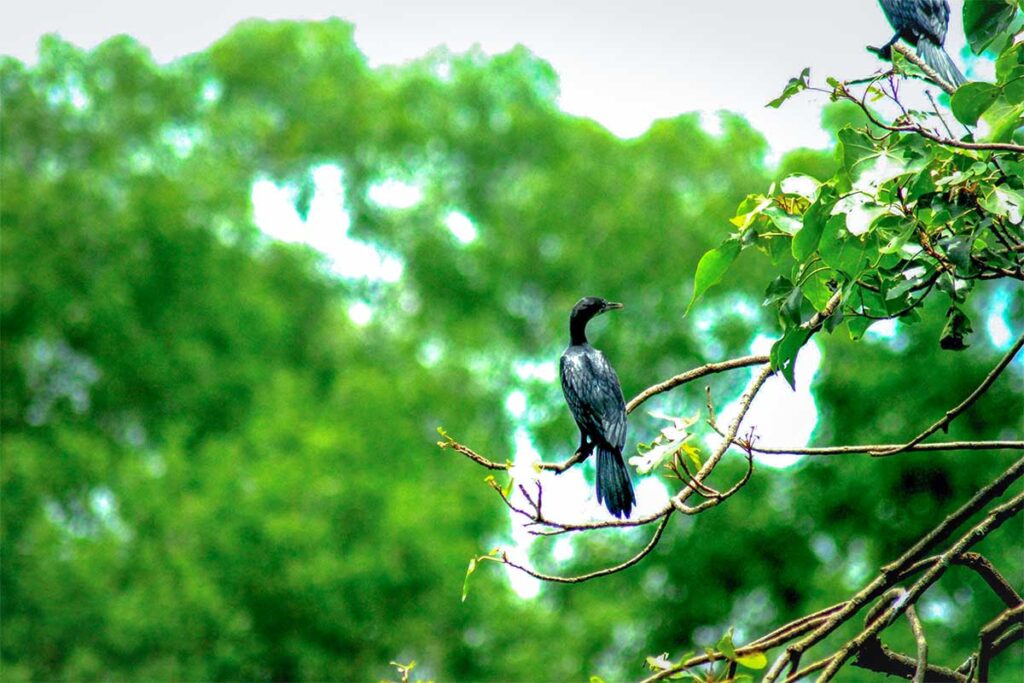
The highlight is the abundance of storks, herons, and ibises nesting in the mangroves. Asian Openbills and Glossy Ibises are frequently recorded in large flocks, while Painted Storks and Spot-billed Pelicans sometimes join them. The close proximity of the nesting trees allows for excellent photography opportunities.
Located just a short drive from Bac Lieu city, this is one of the most convenient sanctuaries to visit. The best times are early morning or late afternoon, when birds are leaving or returning to their nests. Facilities are simple, and shade is limited, so bring water and sun protection.
Read the full Bac Lieu Bird Sanctuary guide →
7. Láng Sen Wetland Reserve (Long An)
Láng Sen is part of the Plain of Reeds, a vast wetland area north of the main Mekong channels. Designated as a Ramsar site, it combines shallow lakes, grasslands, and melaleuca patches that change character with the seasons. It feels wilder and less managed than places like Tram Chim, giving it a raw, natural appeal.
Birdlife includes Sarus Cranes during the dry season, when they come to feed on exposed grasslands. Greater Adjutants have also been recorded, alongside more common species like Asian Openbills, Oriental Darters, cormorants, and a wide range of ducks and waders. The mix of habitats makes it a strong site for both resident and migratory species.
Infrastructure is modest, so a private driver or guide is the easiest way to reach and explore the reserve. It pairs well with visits to rural areas nearby, but don’t expect polished tourist services. Láng Sen is more about raw birding value than convenience.
8. Lung Ngoc Hoang Nature Reserve (Hau Giang)
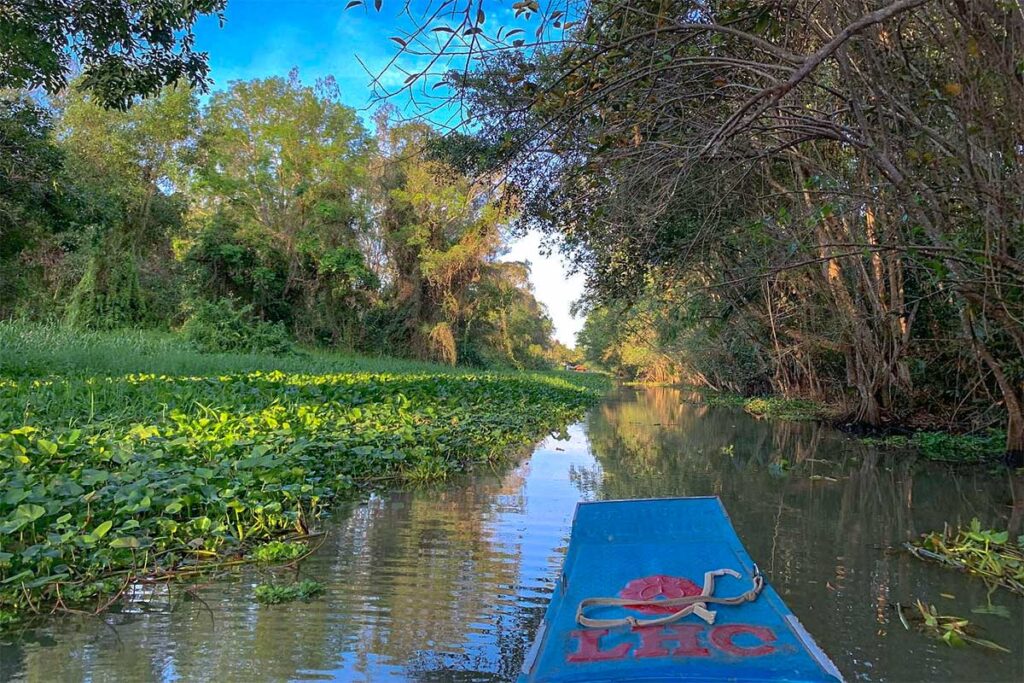
Lung Ngoc Hoang is a lesser-known nature reserve south of Can Tho, covering a large area of melaleuca forest and seasonal wetlands. It’s sometimes described as a “green lung” for the region, and though less famous than Tram Chim or Tra Su, it holds surprising biodiversity. Few foreign tourists make it here, which keeps the experience quiet and unhurried.
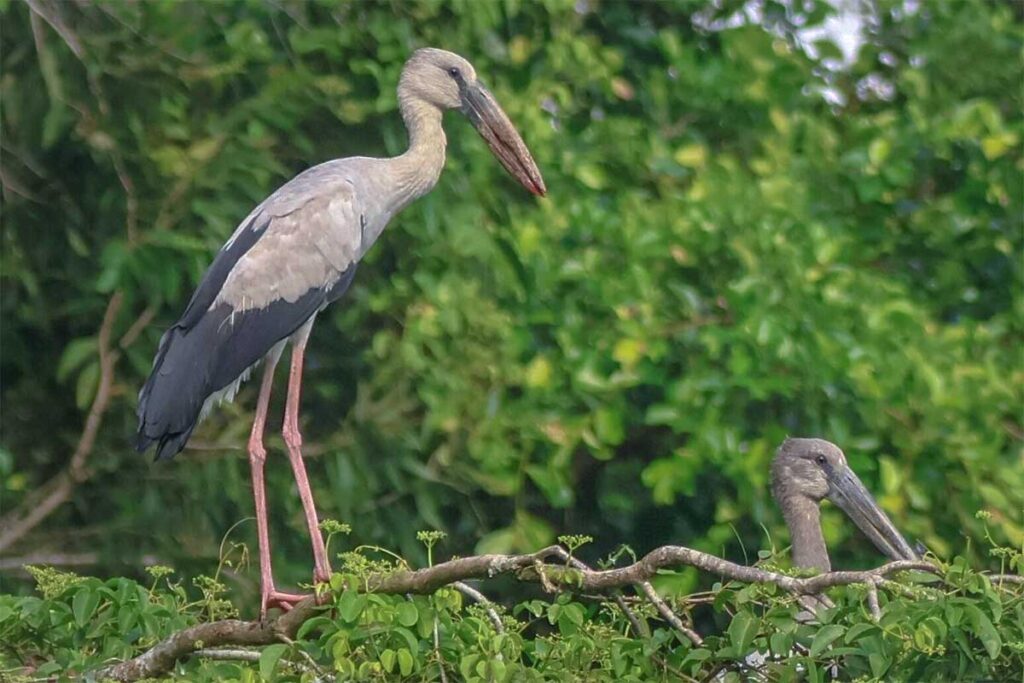
Among the 100+ species recorded, the most commonly seen are Lesser Whistling-Ducks, Asian Openbills, Painted Storks, and Oriental Darters. Cormorants, herons, and egrets are widespread, and sightings of rarer species are possible but less predictable. The birding here is more about variety and atmosphere than about specific star species.
The reserve is easiest to reach from Can Tho by private car. Infrastructure is basic—expect small boats, watchtowers, and local guides with limited English. For travelers who prefer secluded, low-key birding away from crowds, Lung Ngoc Hoang is a rewarding stop.
Read the full Lung Ngoc Hoang guide →
Bird spotting in the Mekong Delta outside nature reserves
Not every birding experience in the Mekong Delta requires an official sanctuary. In fact, some of the most enjoyable sightings happen while you’re simply moving through the countryside. Along canals, rice fields, and fruit orchards you’ll almost always spot herons and egrets hunting in the shallows, kingfishers perched on bamboo poles, and bee-eaters swooping low over the water. Even a short boat ride between villages can turn into an impromptu birdwatching trip.
For more specialist birding, the coastal mudflats offer something very different. Areas like Tan Thanh–Go Cong in Tien Giang are prime stopovers for migratory shorebirds, including rarities like Spoon-billed Sandpiper or Nordmann’s Greenshank. Visiting mudflats takes more effort: you need to time your visit with the tides, expect muddy conditions that require boots or sandals you don’t mind sacrificing, and bring good optics since the birds often feed at a distance. For serious birders, these sites can be as rewarding as the inland sanctuaries.
Wherever you go, it’s worth keeping ethics in mind. Stay back from nesting colonies and avoid using bird call playback, which can stress species already under pressure. Remember that many of the Delta’s landscapes double as working farms—rice paddies, aquaculture ponds, fruit orchards—so always respect private land and ask before wandering off trails. Birding here is as much about sharing space with local life as it is about the species you see.
Tips for spotting birds in the Mekong Delta
Field craft & etiquette
Birding in the Mekong Delta works best if you follow the rhythms of the birds. Dawn and dusk are when roosts explode into life, and in the heat of midday most birds retreat to cover. Staying still and patient often brings better results than chasing birds along the trails. At rookeries, avoid loud noise, quick movements, or pushing too close to nests—disturbance can scatter flocks and even cause chicks to be abandoned. Think of yourself as a quiet observer, not a participant.
Gear & photography
A decent pair of binoculars (8× or 10×) makes all the difference; many sanctuaries don’t provide them. Photographers should bring a telephoto lens in the 300–600mm range, and a lightweight tripod or beanbag for boats. A rain cover or even a plastic sleeve is useful against spray and mud. Dust and humidity are part of the package here, so plan for basic camera care—silica packs and lens cloths go a long way.
Getting around efficiently
The Delta is big and its birding sites are scattered. A private car with driver is often the most efficient way to string together sanctuaries without wasting time in transfers. At melaleuca reserves and mangroves, a small boat is essential to reach the birds. English-speaking local guides can be hard to find, but when available they add huge value by knowing roost times, nest sites, and seasonal movements. Going DIY is fine at stork gardens or well-marked eco-parks, but deeper reserves reward a bit of local knowledge.
Site-specific pointers
- Stork gardens: Arrive 45–60 minutes before sunset; viewing towers can get crowded.
- Melaleuca forests: Start with a boat ride to minimize disturbance, then explore short walks; the best light under canopy comes late in the afternoon.
- Mudflats: Check tide tables in advance; wear footwear you don’t mind ruining; keep your distance so flocks can feed undisturbed.
A note on expectations
Many Mekong sanctuaries are not polished for international tourists. Facilities are basic, signage is minimal, and English is limited. That’s part of their charm, but it means being prepared: arrange transport ahead of time, carry water and snacks, and set your expectations realistically. If you want a dedicated birdwatching guide who speaks English, it’s best to contact one in advance rather than hoping to find someone on arrival. Going in with the right mindset will make the experience far more rewarding.
